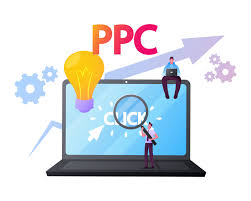Transformative Results: 8 Undeniable Benefits of Working With Digital Marketing Agencies

Today, digital marketing has become an essential tool for companies because a higher return on investment for your marketing investment is not merely desirable, but necessary especially in Nigeria. However, navigating the marketing landscape can be daunting. There is no place for speculation given the vast amount of data, social media trends, and shifting search engine algorithms. It is impossible to overestimate the significance of having a strong online presence and successful digital strategy as more and more customers use the internet and digital platforms for research, interaction, and decision-making. An experienced marketing firm can help with that. Leveraging the power of digital marketing may open up a world of options and help you succeed in the fiercely competitive Nigeria market, regardless of the size of your company. The advantages of adopting digital marketing are numerous and persuasive, ranging from enhanced visibility and reach to economical solutions and customized targeting. This blog demonstrates how marketing firms increase creativity and raise your revenue. We’ll discuss everything from their capacity to maximize your advertising investment to developing a brand identity that appeals to your target market. The Challenges of Growing Your Business Scaling has its hurdles. The challenge is to balance scaling operations and adapting to new demands while maintaining the quality that got you to this point. Throwing more resources at the problem often leads to diminishing returns. While your business surges, the entire market around you is shifting, and customer needs are evolving. It’s also about staying true to your unique brand identity, which becomes paramount as the competition intensifies. The temptation to chase every trend is real but often leads to a diluted brand message. There is one solution – hiring a marketing agency like dgazelledigital. They can create, plan, and execute advertising and marketing projects. In other words, they act as a partner to help you achieve growth. Navigating these complexities is one thing. Emerging with a larger, more profitable, and more impactful business is an altogether different challenge. This is where partnering with a marketing agency can make a difference. 1. Enhanced Marketing ROI A Digital Marketing Agency is aware that every Naira spent ought to yield a solid profit. They concentrate on improving your marketing ROI through: For instance, Lick, a premium paint and wallpaper supplier that practices sustainability and environmental responsibility, found it difficult to deal with the unpredictability of social media marketing. 2. Quality Lead Generation Digital marketing agencies don’t produce any outdated leads. They concentrate on the prospects that have the best chance of becoming devoted clients. Based on demographics, behaviors, and pain points, they assist you in defining your ICP. After that, campaigns are modified to appeal to this particular demographic. Additionally, agencies used technologies to generate leads, including: Marketing firms recognize HQL’s long-term benefits, which lower the cost of acquiring new clients. Additionally, happy consumers support your brand’s expansion by recommending it to others and making repeat purchases. 3. Efficient Funnel Monitoring A marketing firm knows how important it is to monitor the buyer’s progress through the funnel. It aids in understanding your ROI, increasing conversion rates, and identifying bottlenecks. To address problems at various phases of the funnel, agencies employ a variety of strategies: Marketing firms frequently make use of specific platforms like as 4. Strategic Content Development Marketing agencies help you create a content plan that aligns with your business goals. This ensures that every piece works hard to attract and engage your target audience. The process is as follows; Kurve’s work with Tree is an excellent example of how we leveraged TikTok’s Video Insights Tool to understand audience behavior. The TikTok creators for Treecard’s campaign were also preselected according to their compatibility with the brand and viral patterns within their accounts (a consistent number of videos with significant views and likes). 5. Boosting Brand Visibility One of the primary advantages of digital marketing is its ability to significantly expand the reach and visibility of your business. Unlike traditional marketing methods, which are often limited by geographic boundaries and audience size, digital marketing allows you to target a much wider audience beyond your local market. Through the use of search engine optimization (SEO), social media marketing, and other digital channels, you can make your business more discoverable to potential customers who are actively searching for your products or services. Additionally, digital marketing enables you to track and analyze the performance of your campaigns in real-time, allowing you to continuously refine and optimize your strategies for maximum impact. This data-driven approach ensures that your marketing efforts are effectively reaching the right people, at the right time, and through the right channels. Some key benefits of increased reach and visibility through digital marketing include: 6. Customer Retention Strategies New customers are more expensive than keeping an existing one. Marketing agencies understand this and help you develop effective marketing strategies that nurture existing customers, turning them into loyal advocates. Agencies often use personalized digital strategies such as: Marketing agencies know that customer feedback is a goldmine of insights. The best methods to gather this data are Post-purchase Surveys, Net Promoter Score (NPS) Surveys and Customer Support Analysis. Unlock Your Brand’s Potential with DgazelleDigital! Let us drive your growth, engagement, and results to new heights.
6 unique reasons google ads are important for you as a small business owner

If you own a small or medium-sized business, you are aware of how critical it is to reach the proper customers with your goods or services. Selecting the best advertising solution for your business might be overwhelming with so many possibilities available. Google Ads is one platform that is not to be disregarded. We’ll go over eight reasons why companies should use Google Ads in this blog article. Google adverts, formerly Google AdWords, is a pay-per-click advertising network that enables companies to display their adverts on other websites throughout the internet and on Google’s search results page. Given that Google has over 2 billion monthly active users, it seems sense that companies of all kinds are using Google Ads to expand their consumer base. We’ll demonstrate how Google Ads may assist your company in achieving its objectives, from cost-effectiveness and interaction with other technologies, to targeted advertising and quantifiable outcomes. Thus, continue reading to find out more about the advantages of Google AdWords for your company, regardless of whether you’re a medium-sized company trying to expand online or a small firm just getting started. Tailored Advertising Utilizing Google Ads offers several advantages, one of which is the ability to target specific demographics, areas, and interests. You may make sure that the people who are most likely to be interested in your goods or services see your advertisements by using targeted advertising. This will enable you to reach the correct people at the right time, increasing the possibility that they will click on your advertisements, make a purchase, or finish the required action. For example, if you are the owner of a neighborhood coffee shop, you may use Google AdWords to target people who are searching for “coffee shop” in your city. You may make it more likely that individuals who are actively searching for a coffee shop in your neighborhood will notice your ads by doing this. You can also target particular demographics, like age and gender, to make sure the individuals who are most likely to be interested in your products or services see your adverts. Nevertheless, targeting also helps you save money by keeping you from wasting it by displaying your advertisements to consumers who aren’t interested in your goods or services. You may maximize the use of your advertising budget and achieve the most return on investment (ROI) by focusing on the appropriate audience. Measurable Outcomes Using Google adverts also offers the wonderful benefit of real-time monitoring and evaluation of the efficacy of your adverts. Google AdWords provides businesses with accurate data and statistics on their advertising campaigns, including cost per conversion, click-through rate (CTR), and conversion rate. Companies can use this data to identify which advertisements are doing well and which ones require tweaking or optimization. To increase the efficacy of your advertisement, you may, for example, modify the targeting or the copy if you notice that the CTR is low. On the other hand, if your advertisement has a decent conversion rate, you can increase the budget allotted to it in order to extend your audience and enhance sales. By looking at the Google Ads data, you can make data-driven decisions that will improve the efficacy of your ad campaigns and ultimately increase your return on investment. To increase the efficacy of your advertisement, you may, for example, modify the targeting or the copy if you notice that the CTR is low. On the other hand, if your advertisement has a decent conversion rate, you can increase the budget allotted to it in order to extend your audience and enhance sales. By looking at the Google Ads data, you can make data-driven decisions that will improve the efficacy of your ad campaigns and ultimately increase your return on investment. Economical The fact that employing Google Ads is a cost-effective way to draw in more customers and boost sales is one of its main advantages. Businesses using Google Ads engage in pay-per-click (PPC) advertising, which only incurs fees when a user clicks on the advertisement. This means that you don’t have to pay for ad space or impressions—you only have to pay for clicks on your advertisement. Because you only pay for website traffic that really arrives, it is an affordable option for businesses of all sizes. Furthermore, you have the flexibility to create and adjust an advertising campaign budget with Google Ads. Therefore, you can begin small and progressively increase your budget as you start to see the effects of your advertising initiatives. When compared to print or television advertisements, Google Ads could be a more cost-effective option for advertising. For example, a 30-second commercial during a well-known TV show can cost tens of thousands of dollars, but a Google Ad campaign can be started for as little as a few hundred dollars and modified as needed. Raise Awareness of Your Brand Google Ads is a fantastic way to increase brand awareness for your business. Advertising on Google’s search results pages and other websites across the internet will increase the visibility of your business and increase the likelihood that potential customers will see it. This increased visibility may lead to improved brand awareness and recognition, which could ultimately translate into increased sales and profits for your business. For example, you could use Google AdWords to place ads on websites that your target market commonly visits if you own a small clothing store. The possibility that potential customers will see your brand and visit your website or business will rise if your advertisement appears on these websites. Additionally, by concentrating on particular interests and demographics, you can guarantee that the people who are most likely to be interested in your products or services see your advertising, increasing the possibility that they will become customers. You can target individuals who have already visited your website by using remarketing campaigns, which are another feature of Google AdWords. You may improve brand memory and entice customers to return to your website and complete a transaction by displaying advertising
Drive Results with Google Ads—Even Without a Website

It’s not simple to run a small business, particularly if you’re new to the world of entrepreneurship and still learning the ropes. It’s imperative that you closely monitor production to guarantee that the goods you provide to clients are of the highest caliber. In addition, you have to oversee your staff, manage suppliers and stakeholders, and formulate a plan for the expansion of your business. Not to add, you have to take good care of your internet presence and carve out a solid niche for yourself. But to get your own custom website just like every small business owner or entrepreneur is not on the list of things to quickly achieve but nevertheless, your online presence is imperative so the question begging to be answered, can i use google ads without a website? AdWords Express AdWords Express is a choice designed for novice advertisers and small businesses in mind. You don’t need to be an expert in online advertising to use the solution because it is completely automated. All you need to do is register, customize your advertisement to your company’s objectives, and Google will do the rest. On both desktop and mobile platforms, they will display your advertisements on Google Maps, Google Search, and other pertinent websites. You can go on to Google AdWords if you understand the basics of web advertising and are happy with the outcomes. With the help of this solution, you’ll be able to produce various ads, select your keywords, tailor them to your company’s demands, and keep an eye on their results If I Don’t Have a Website, Where Will My Ads Link to? Facebook page To begin with, you can point potential clients to your Facebook profile as a landing page. But make sure your Facebook profile is current and has all the information potential customers could need, including your address, phone number, a description of your goods and services, and a map of your location. You can also link your advertisement to your Google+ profile if you believe that this is a better strategy to persuade people to test your products than using your Facebook account. Using Google My Business, you can easily build a business page. Google Business Profile It’s possible to run Google Ads without a website through your Google Business Profile. Google Business Profile has a website feature that allows businesses to create a basic landing page or website without the need to host a domain. This feature is perfect for small and local businesses that may not have a traditional website but want to run Google Ads and promote their services or products. Google Ads can be a very effective approach to advertise your company online. Starting an internet advertising campaign doesn’t always require a website, even though it might be a useful tool. With a Google Business Profile Website, you can provide essential information about your business, such as your address, phone number, business hours, products, and services. When you run Google Ads, you can direct potential customers to your Google Business Profile page, where they can find the information they need. How flexible is AdWords Express Ads? Google AdWords is the greatest option for you if you require in-depth monitoring and reporting, as was previously discussed. However, AdWords Express is the best option if you’ve never used internet advertising before and just want to give it a try. While this option gives you less flexibility than AdWords, you still have some control over certain aspects, such where your advertisement is seen. If you own a small Italian restaurant, for instance, users may see your adverts when they search for “Italian restaurant Sydney” and include your location. Conclusion But Google Business Profile and Facebook page can be limiting since it creates a very simple page with just a few opportunities for customization. So this approach can be particularly beneficial for local businesses just starting out, or those with very limited resources looking to establish an online presence and connect with potential customers. However, We still recommend having a traditional website hosting to fully maximize your advertising strategies. If you need help with website creation, you can schedule a free strategy call with our experts today! GET IN TOUCH Running Ads is a powerful way to promote your business online, but not every small business owner or entrepreneur know which platform that work best for their business, if you happen to be in this category, let us help you. Schedule 15 free mins call now with us
Google Ads vs. Facebook Ads: Which of them should you use as a small business owner

Many businesses had a polarizing view of Facebook Ads and Google Ads until now. The long-standing rivalry between the two companies, which is frequently dramatized by technology media outlets, was interpreted as unquestionable proof that the two platforms were in direct competition with one another and that companies of all sizes had to make the difficult decision of which platform was best for their needs. This false dichotomy is still misleading and confusing to those who are unfamiliar with online advertising. Although the two platforms are sometimes positioned as competitors, nothing could be further from the truth in a practical sense. In order to attain optimal visibility, boost leads and sales, and attract new clients, numerous companies are utilizing the advantages of advertising on Google and Facebook Ads in tandem. They are doing this by implementing distinct tactics that correspond with the features of each platform and experiencing impressive returns on their advertising investments. Facebook ads vs Google ads It’s important to comprehend the main distinction between Google Ads and Facebook Ads before we examine their many features and benefits. Google Search base Ads The biggest and most well-liked PPC advertising network in the world is Google Ads, formerly Google AdWords. It is now synonymous with “paid search” due to its extensive usage. Though other platforms, such Bing Ads, function similarly, the names are used interchangeably. Text-based ads and keyword targeting are the main components of paid search. In the hopes that their advertisements will appear alongside search results for these inquiries, advertisers use Google to bid on keywords, which are particular words and phrases included in search queries input by Google users. The term “pay-per-click advertising” refers to the practice of charging advertisers a set amount of money each time a user clicks on an advertisement. PPC bidding and bid optimization is a complex issue, and beyond the scope of this article, but fundamentally, users are paying for the possibility to find new clients based on the keywords and search terms they enter into Google. Facebook ads: social connection base ads Facebook advertisements are a shining example of “paid social,” or social network advertising. Facebook has the most monthly active users (MAUs) of any social network in the world, making it a fiercely competitive and potentially profitable part of the digital advertising strategies of many companies. While Facebook advertising and Google Ads share certain similarities in that both systems allow advertisers to effectively promote their businesses online, this is where the similarities end. sponsored social helps individuals locate businesses based on their interests and online behavior, as opposed to sponsored search, which helps businesses find new clients through keywords. The main distinction between Facebook and Google Ads is that: Facebook helps potential consumers find you, whilst Google Ads assist you in attracting new ones. The benefits and features of Google AdWords Google is regarded as the de facto leader in internet advertising since it is the most commonly used and well-known search engine in the world. Google provides marketers with access to an unparalleled audience of consumers who are actively searching for products and services, handling over 3.5 billion search queries daily. There are two main networks that Google offers its advertising on: the Search network and the Display network. All of Google’s search functionality is included in the Search network, where advertisers can bid on millions of keywords and phrases to reach potential clients. About 98% of the World Wide Web is covered by the Google Display Network, which gives advertisers more visual ads like banners. This makes it an excellent option for advertisers looking to achieve marketing objectives that aren’t as conversion-driven as PPC ads, like using banner ads to increase brand awareness widely. Google Ads offers numerous advantages, starting with its massive audience reach. Handling over 1.2 trillion searches annually, Google provides advertisers with a vast potential customer base. Its advanced AI, RankBrain, continues to improve search accuracy, enhancing opportunities for businesses to reach relevant users. Google Ads operates on a level playing field, where ad quality and relevance matter more than budget size. Advertisers with well-optimized ads often outperform those with larger budgets but lower-quality ads. Google rewards relevance, making PPC success achievable for businesses of all sizes, especially when focusing on metrics like click-through rate, which is key in evaluating ad performance. Another strength of Google Ads is its diverse range of ad formats. While originally limited to text-based ads, today’s options include ad extensions, sitelinks, social proof, and more, offering customization options for various business types. Google’s tailored formats, such as for hotels and car manufacturers, further enhance the potential for advertisers to effectively engage their target audiences. Facebook ads strengths Facebook ads, as they currently exist, may seem like a scruffy newbie when compared to Google Ads, but Facebook has been honing its advertising offering for a number of years. Facebook Ads is now a leader in the sponsored social media space and a key component of the digital marketing plans of many small business. Facebook Ads offers unparalleled audience targeting thanks to its vast global user base of over 1.55 billion active users. While Facebook’s sheer scale is impressive, its real power lies in the granularity of its targeting capabilities. Advertisers can leverage detailed user data, such as life events, interests, and behaviors, to create highly specific ads tailored to their audience. One notable feature is “lookalike audiences,” which allows advertisers to upload customer data and target new users with similar interests, effectively doubling their reach. Facebook is an inherently visual platform, setting it apart from the text-heavy nature of platforms like Google Ads. The most effective Facebook ads blend seamlessly with the content in users’ News Feeds, allowing advertisers to harness the persuasive power of visuals. This visual focus enables businesses to create compelling, aspirational ads that drive engagement and conversions. One of the biggest win of Facebook Ads is its incredible return on investment (ROI). Despite campaign costs varying based on scope and objectives, Facebook Ads are affordable,
The Dark Side of Influencer Marketing: What No One Is Telling!

22% of consumers between the ages of 16 and 60 who use social media have bought fake products that influencers have recommended. When you were a child, do you recall your legal guardians telling you to avoid negative influences? In the social media age, that’s far easier said than done. Let’s start by defining an influencer and what they do before discussing the drawbacks of influencer marketing and how it can still be beneficial. They are a person who has developed a devoted fan base in a particular specialty that they actively participate in. The amount of their following is typically determined by the kind of niche they are involved in. Because of their standing, authority, expertise, or connection to their audience, they have the power to affect other people’s purchasing decisions. Influencers are a very attractive channel for businesses to use to market their goods and services through strong brand alliances. Because of this, it is even more important that their followers understand the high instances of influencer fraud that are supported by faulty metrics, such as engagement rates and false followers. The Threat of Influencer Marketing Fraud Given the data presented in this article’s opening paragraph, which indicates that the annual value of counterfeit goods is estimated at $509 billion, it is imperative that more consumers are shielded from deceitful influencers. Thousands of people die every year as a result of products pushed by powerful, shady influencers who have control over an oblivious, ignorant public, these products include but not limiting to unsafe electrical goods, bogus medications and cosmetics, and inferior foods that are all sold online. The degree to which reality and fabrication are blended on social media—a cynical mixture hidden beneath a powerful motivator of social proof—makes it more harmful. Let’s examine the increasingly transparent influencer marketing façade first, beginning with the main black-hat tactic of creating phony followings, then moving on to the more equitable side of real influencers. Metric Inflation and the Rise of Fake Followers Beneath the Colgate grins and never-ending stream of praise, a little investigation will frequently uncover a dark theme among dishonest influencers: an equally phony fan following. These accounts consist of dormant profiles, bots designed to imitate actual users (a problem that has become especially common with the introduction of AI), and even bulk purchases of followers from dubious web services (are you familiar with click farms?). Influencers create the appearance of having a sizable and active audience by building a fictitious following. This also affects the level of interaction they achieve because metrics like likes and comments get skewed. The ability of bots to like and comment on their own these days makes it much more difficult to separate fact from fiction. Fake followers are empty vessels used solely to manipulate metrics and fortify a facade of influence. Why Do Influencers Take This Route? You would probably find someone rather depressing and be reluctant to have a friendship with them if you knew someone who boasted about having IRL pals they made up to boost their social status. The issue is that, compared to real life, where people are more inclined to demand empirical evidence for your assertions, it is far simpler to get away with this kind of fraud online. Naturally, marketers view influencer status as directly correlated with fan base size. For certain influencers, this makes exaggerated follower counts a difficult deception to believe. Many influencers have turned to chasing bigger numbers (ironically, at any costs) in order to be more marketable, to be able to demand higher prices, and to discover a shortcut to governing their niche. However, this comes at the steep expense of inauthentic interactions with an imaginary audience. The Impact of Phony Followers Influencer marketing that depends on exaggerated metrics and phony followers is a surefire way to start a negative chain reaction and a waste of time and money. Companies invest a lot of money in joint ventures for marketing initiatives that reach unresponsive populations and yield little to no interaction. Customers begin to distrust influencers and their advertisements when they consistently avoid or fall for their deceptive advice. However, the damage goes deeper: if online authenticity and reliability are undermined more and more, this has a profound impact on the social media marketing environment as a whole. For sincere influencers who conduct business honestly, it makes things nearly impossible because they find it more and more difficult to establish enduring bonds with their loyal following. The Way Forward The most important component in any influencer marketing campaign should be collaboration. Collaborating with social media influencers in the right way may be a fantastic way for companies to expand their reach and increase awareness. When you start your search, consider these four easy things to ask: There are various online tools that can empower brands and consumers against the onslaught of influencer marketing deviants. These are just three kinds of software out there, but there are many more. These tools analyze follower demographics, engagement patterns, and follower growth rates. They reveal red flags and nasty narratives, such as follower surges or low engagement from a large audience, helping you identify accounts that are potentially fraudulent. Conclusion Don’t let the dark nature of fake followings overshadow the massive potential of influencer marketing. By prioritizing genuine engagement, metrics that matter, and partnering with real influencers, brands can and do achieve jaw-dropping results. For those who commit to transparency and forge actual trust, the future burns bright GET IN TOUCH Getting the right influencer to partner with your business can be a dauting task, leave the heavy lifting to us, book a free 15 mins call on to know our strategy
10 Surprising Influencer Marketing Trends That is Dominating 2024!

Businesses are now accessing a more human and relatable type of ads by utilizing influencers’ reach and credibility, which allows them to connect with potential customers in a manner that traditional advertising frequently cannot. Influencer marketing is a vital part of many contemporary marketing strategies since it can increase brand recognition, legitimacy, and customer involvement. Influencer partnerships are made possible by corporations’ growing interest in sponsored content, as compared to traditional social ads. According to adage, 92% of brands want to expand their investment in influencer marketing. Influencer and brand partnerships are increasing, and we keep a close eye on trends that impact these relationships. I believe that these are the most popular trends in 2024 so far. The Growing Effect of AI Brands and content producers appear to be cautiously hopeful about incorporating artificial intelligence (AI) into their influencer marketing campaigns. According to a September 2023 survey carried out, 52% of influencers and 76% of marketing agencies now use AI in some capacity to enhance content production, locate influencer partners, and analyze data. Some companies are taking it a step further and using virtual influencers in place of more conventional creators. Social media sites are aware of how AI is affecting the creative sector. In an effort to “democratize creativity,” YouTube recently released AI tools that simplify difficult processes. Similarly, TikTok recently launched a new feature that lets content producers identify work that is assisted or made by AI. TikTok beyond Gen Z Uses Only As TikTok grows in popularity, more and more senior users are joining the platform, adding to its already diverse user base. Although affluent Gen Xers are spending more time on TikTok, just 5% of advertising budgets are allocated to targeting this audience. This presents a chance for influencers and advertisers to reach a wider audience. Retirees known as “grandfluencers,” who are gaining popularity on social media, are also making inroads on TikTok and Instagram and forming alliances with businesses such as Carnival Cruise Lines. Moving From Generalists To Experts Influencers are narrowing their focus as the social media content market gets increasingly crowded. Influencers are increasingly focusing on certain topics, like anti-aging or curly hair, instead than sharing broad beauty advice and ideas as they once might have. One influencer, Eilidh Moffat, witnessed an 841% gain in her following in 2023 as she specializes in skin care for the over-40 demographic. The same holds true for other influencer markets, such as tourism (specifically, Disney family vacations rather than broad travel). Creators that have a specialized following appeal to brands more because they enable them to narrow their emphasis to the correct target. The Expansion of Social Commerce In the past, TikTok and Instagram have shown to be more appropriate social media platforms for raising awareness. Nonetheless, marketers have even more motivation to forge closer strategic ties with influencers as a result of the development and expansion of social commerce. The popularity of live shopping is also rising. Consider it the interactive, modern-day equivalent of a home shopping channel, where prospective customers can engage in immersive experiences and learn about items through sessions with reliable influencers. Retail behemoths such as Walmart and Amazon are proactively leveraging live shopping and cultivating connections with creators to bolster their market domination. As they set the standard, other retailers usually follow suit. Repurposing Content Created by Influencers When it comes to more transient material, such as Instagram Stories or TikToks, brands that are hesitant to use influencer content can be concerned about their investment and if they’re receiving a satisfactory return. For this reason, a lot of them are changing the way they draft influencer contracts to provide for additional chances to repurpose the material. Influencer-generated content is being used by brands in a variety of marketing channels, such as emails, digital ads, traditional television advertisements, and more. The intention is to imitate the aesthetic of sites such as TikTok, but to do it in a way that propels quantifiable behaviors and expedites the purchasing process. LinkedIn have been Getting Hotter People are using LinkedIn at record-breaking levels to connect, grow in their jobs, and advertise business-to-business (B2B) goods. Marketing spending usually follows engagement, which is why industry leaders like Intel and Hootsuite are cultivating relationships with LinkedIn influencers and why 75% of B2B marketers are currently engaging in influencer marketing. The development of enduring content, such as Hootsuite’s social media career report, and the endorsement of numerous influencers have greatly increased its amplification and power. There have been almost 1.2 million impressions so far. Influencers and brands usage of AI. Marketers are actively using AI technologies for data analysis, influencer identification, and brainstorming in order to take advantage of these potential. Marketing campaigns are already effectively embracing AI solutions and are yielding higher efficiency and ROI. Conclusion Despite how far influencer marketing have evolved, there is unrealized business potential in creating content on TikTok that appeals to a wide range of viewers, especially older demographics. In order to navigate the crowded social media landscape, brands and influencers would be well to specialize strategically. In order to vary their outreach efforts and more successfully reach their target, marketers should welcome these micro-influencers with highly targeted audiences. Influencers shouldn’t be scared to hone in on a niche market. Anticipating the future, a concentration on specialized niches, the astute incorporation of artificial intelligence, and inventive applications of content generated by influencers will probably characterize a year full of inventive breakthroughs and expansion for influencers and companies alike. GET IN TOUCH Remember, brand is more than just a snappy tagline, a logo, or a few colors. Get in touch let’s help you craft a brand that depicts all the things your company stands for,
The Future of Marketing: Why Digital Branding is Your Secret Weapon

Over the years, the definition of a brand has evolved significantly. Previously, a brand consisted of a logo, a few colors, and a variety of fonts. Today, brands are identified by the emotions they arouse in people who see them. Experience and perception are key components of branding. Enhancing your marketing, recognition, market share, and revenue can be achieved with the use of a brand. You may be wondering how a business is able to achieve all of these goals. Let’s use Nike as a case study Several decades prior, Nike was facing difficulties in gaining traction with athletes. They weren’t well-known for making athletic footwear, and not many serious athletes purchased from them. They were obviously going to have to change and come up with a new, appealing message for the market. Nike started using the famous “Swoosh” emblem in 1985, but it was just the beginning. The corporation sent its agency a big order for commercials, all of which included different sports and events. Still, something was missing to bring everything together. When Walt Stack, an octogenarian runner, wore branded sneakers for his morning run in 1988, Nike shot to fame in the sports world. The commercial’s message? Just do it. Athletes who believed the message spoke to them began to send in feedback within hours. Nike quickly established itself as the go-to brand for athletes. It goes beyond just a tagline or logo. It’s an idea and an emotion that motivates people to lead active lives everywhere—men and women alike. That is what a powerful brand can do. It goes beyond only getting acknowledged. Rather, the goal is to elicit strong feelings and thoughts from viewers of your website, advertisements, merchandise, and marketing materials each time they see your logo. Why Is Brand Investment Necessary? Reality can be reshaped by a brand. It’s a brand that makes people want your product, which is why some companies sink thousands into developing their business identity. How people perceive your products or services is what’ll make them choose you over your competitors. The first and most crucial thing you need to do is stop thinking of brand development as an expense, and consider it an investment. Properly building this identity is crucial to influencing how people see your goods, and whether they’ll opt to buy from you. Remember that building a brand is a long-term, continuous effort that offers the following advantages: What Characterizes a Brand? The development of a strong brand involves several components. While it would be impossible to list them all, we will focus on a few of the most important and fundamental factors that must be taken into account when creating a business brand identity. Compass Brand Your branding journey starts with the brand compass—not with colors and logos, but with purpose. What are your company’s goals, values, mission, and vision? These strategic objectives might help you decide how to position and develop your brand. Organizational Culture Offering sleeping pods in the break room, pool tables in the cafeteria, or personal development programs for office workers are just a few examples of what company culture entails. Instead, pay attention to your basic values—the tenets that guide your interactions with coworkers and the wider community and explain your actions. It will inspire workers, transforming them into brand promoters. Individuality Which terms best describe your brand? Sincerity, skill, toughness, glamour, or technicality? These are the characteristics that your customers relate to and find dependable. Name and Catchphrase Coming up with a name and a catchphrase is a very difficult task. You need to discover something that is available, relevant, and recognizable rather than just picking a name. An acronym, like Nike, can be brief and expressive, or it might be descriptive, like as Toys R Us. Identity Creating a logo alone won’t adequately convey your firm’s personality and culture. Instead, it must be an integral part of your brand. Nor does it have to be a name. One may possess a: Choose a logo style that suits your company. Tone, Message and Voice What would your brand or company say and how would it express it if it could speak? Would it sound like a sarcastic young adult with a “tude, or would it speak in a rough, adventurous tone? What kind of message are you sending to your clients? Adding a human element to your brand helps increase consumer recognition and identification. Final Design and Architecture The majority of people start the architectural process at the very end. Only once you’ve determined everything in the preceding steps can you begin to develop your brand. The names, colors, and symbols are all integrated into one harmonious whole by the architecture. Conclusion A brand is more than just a snappy tagline, a logo, or a few colors. It is a graphic depiction of all the things your company stands for, including its mission, values, message, offerings, and services. When you devote the necessary resources—money and time—to creating a strategic business brand identity, you will ultimately reap the rewards. GET IN TOUCH Remember, brand is more than just a snappy tagline, a logo, or a few colors. Get in touch let’s help you craft a brand that depicts all the things your company stands for,
Why 90% of PPC Campaigns Fail and How You Can Avoid Their Mistakes

Pay-per-click (PPC) marketing can be one of the most efficient—or annoying—methods to grow your company. Due to a few basic errors, most businesses struggle to fully realize the potential of PPC. The unfortunate thing is that these errors are simple to correct and may be avoided! Why then do PPC ads not succeed? In this post, we’ll go over five of the most frequent PPC errors that cost businesses thousands of dollars per month in lost revenue and squandered advertising expenses, along with advice on how to avoid them. Not adding negative keywords Make sure the clicks coming from PPC campaigns are good quality and coming from prospects who are most likely to convert when you’re investing your marketing budget in this kind of advertising. Because Google offers multiple match types for your advertisements, they will appear for a variety of keywords, not all of which are pertinent to your company, therefore you will need to stop your ads from appearing for them. Until you instruct it not to, Google will show your ads for generic keywords like “free” and “cheap.” Therefore, if you’re utilizing phrase match keywords in your campaigns, terms like “free” and “cheap” as well as other terms that Google deems relevant may cause your advertisements to appear. Make sure the clicks coming from PPC campaigns are good quality and coming from prospects who are most likely to convert when you’re investing your marketing budget in this kind of advertising. Because Google offers multiple match types for your advertisements, they will appear for a variety of keywords, not all of which are pertinent to your company, therefore you will need to stop your ads from appearing for them. Until you instruct it not to, Google will show your ads for generic keywords like “free” and “cheap.” Therefore, if you’re utilizing phrase match keywords in your campaigns, terms like “free” and “cheap” as well as other terms that Google deems relevant may cause your advertisements to appear. Ignoring Conversion Tracking Whether it’s your social media ads or PPC management, conversion tracking is a crucial tool for assessing the performance of paid media initiatives. It’s like trying to navigate in the dark without this crucial measure. Insightful data analysis and strategic decision-making can be greatly aided by properly configuring tracking measures utilizing Google Tag Manager (GTM) and other data gathering sources. With GTM, you don’t have to worry about breaking into the intricate structure of your website to apply monitoring measures. Individual occurrences can then be tracked and imported into Google Analytics for further monitoring and reporting. Excellent insights are provided by tools like Google Analytics and GTM, which you can use to optimize your ads and website and improve the performance of your PPC campaigns. You may successfully increase conversion rates and steer clear of typical pitfalls by monitoring data trends and making necessary adjustments to your plans. Not using location targeting Your target audience should be the foundation of any effective PPC campaign. It follows that, if you own a local business, you probably want to focus on local clients. Spending money on customers who will never come into your store or make a purchase from you could be a waste if you target other cities. You can prevent your advertising from appearing in places you might not be able to deliver by using negative location targeting. You can make sure the appropriate people see your advertising in the right places by using location targeting with Google advertising. This can improve conversions and click-through rates, thus enhancing the effectiveness of your advertisements. Neglecting Testing and Optimization Continuous testing and optimization are essential components for raising campaign efficacy and ensuring that your marketing tactics resonate with the intended audience. Ignoring these two factors can lead to campaigns that remain static, marketing tactics that are not optimized, and a failure to recognize areas of weakness or opportunity for growth. The notion that one-time testing is sufficient is a misconception that we frequently see, but the truth is far different. Achieving success requires ongoing observation, analysis, and strategy revision in response to new information. It’s an ongoing “work in progress” that calls for dexterity and proficiency. A method of optimization that focuses just on the most obvious measures may miss opportunities for enhancement. Failing to Craft Ad Copy Your PPC campaign will attract attention, enhance click-through rates, and increase conversions if they have compelling, creative, and successful ad copy. Paid ads efforts need to connect with your target, be memorable, and bring about the required result. Creating generic material that does not appeal to the target audience, ignoring the usage of target keywords, and failing to write an effective call to action are common mistakes in ad copy. Another common error is to overlook the significance of writing ad copy that complies with the specific platform being utilized or to ignore the character limit restrictions. Keep an eye out for these mistakes, since they could have a big impact on how successful your campaign is. Here are some pointers for crafting persuasive ad copy: We understand that creating effective ad material for your company can be difficult, particularly since Google only allows headlines to be 30 characters long and descriptions to be 90 characters long. Still, within the constraints of different platforms, you may produce excellent ad copy with the aid of numerous AI tools available online. As an alternative, you may always think about hiring an professional agency like Dgazelle to create outstanding ad copy GET IN TOUCH Over the years, we’ve worked with countless clients across many sectors, guiding them towards their desired success. If you’re feeling overwhelmed or unsure, let us lend our expertise. Get in touch with our team, and let us help you optimise your ad performance.
The Dark Side of Email Marketing: Common Mistakes That Could Cost You Thousands!

First impressions count as much in email as they do in person and businesses used to consider email marketing to be a nice-to-have. Presently, over 90% of poll participants believe it to be at least somewhat important to the overall success of their business, with 41% believing it to be extremely important. Rich communication may improve email health, increase revenue, and establish your brand’s reputation. With a return on investment (ROI) of $42 for every dollar spent, many B2B sales and marketing teams use emails to gain direct access to customers, improve sales conversion and increase revenues. But there are a lot of dos and don’ts in email marketing to be mindful of. Overlooking the welcome email Ignoring the welcome email is the first mistake that email marketers make. You don’t want to abandon those who have chosen to subscribe to your email list. Along with giving them more details about your business, you want to let them know how much you value their joining your email list. Many companies leave these subscribers hanging by failing to send a welcome email. Avoid making this email marketing error since it may give the impression to your audience that they are unimportant to your company and communicate the wrong message. Sending a welcome email is the greatest approach to stay clear of this email marketing error. Cutting off the subject lines Our next mistake in email marketing is to cut the subject line. Sending emails with the subject line obscured is a common error made by businesses. Even while it might not seem like much, it has a major influence on how much your subscribers interact with your emails. Firstly, abbreviated subject lines may convey an air of incompetence. They can come across as careless, or the subject line might be illegible due to its removal. In addition, there’s a chance that your subject line will be truncated, giving your email a different connotation. How to steer clear of this email marketing error: skim your subject lines. Spend some time previewing your email to see how it will appear to your audience before you even send it out to your subscribers. It is important to review each iteration of your subject line to make sure it appears properly across all platforms. Email subject lines should be brief and to the point in order to avoid being cut off on any platform, as character limits differ greatly between devices and email clients. Incompetent design Ignoring the design of their emails is one of the biggest mistakes businesses make when it comes to email marketing. It is not enough to just combine a few pictures, add some color, and call it a day. Whether or whether your audience interacts with your email after it has been received is mostly dependent on the quality of your design. Your audience won’t want to interact with your emails if your design appears amateurish or careless. They’ll unsubscribe, or worse, close them. How to steer clear of this email marketing blunder: Make expert designs. Making an investment in email design is a good place to start if you want to steer clear of this email marketing mistake. You should select a design for your emails that accurately represents your company. You can see how Starbucks’ design reflects the company’s business in this example. Their subscribers have a good experience because of the simple, contemporary style. Ignoring your CTA (call to action) Ignoring your call to action (CTA) in your email comes next on our list of typical email blunders. One of the most important components of your email is your call to action (CTA), which directs readers to perform the next action. Users won’t know how to continue if your email lacks a call to action. Businesses also make a variety of mistakes when it comes to CTA buttons. Among the frequent errors are: How to steer clear of this email marketing error: Make your CTA buttons seem good. You must optimize your call-to-action buttons if you wish to steer clear of this email marketing error. A CTA button should be designed so that it is easily noticeable. Furthermore, pay attention to where in the email you position your call to action. It might not be seen if it is buried too deep in the message. As demonstrated by this Starbucks example, you want to make sure that it is in a location where your audience is likely to see it and click on it. Ignoring personalization Ignoring personalization is one of the biggest mistakes businesses make when it comes to email marketing. Dozens of businesses compete with one another for the attention and hard-earned money of your subscribers through emails. Personalization is a must if you want to grab their interest. To make email marketing easier, a lot of businesses send their subscribers generic emails. This strategy has the drawback that not everyone is drawn to your company for the same reasons. Because there are so many emails in your audience’s inboxes, if yours doesn’t catch their attention, they’ll probably ignore it. One of the most common mistakes in email marketing is to neglect personalization, yet this is something that is simple to avoid. To provide your audience with an improved email experience, you should segment your subscribers and personalize their emails. Among other things, you can group your subscribers according to their interests when you segment them. From there, you can tailor the content you deliver to these groups based on the topics that most appeal to them. If you own a clothes store, for instance, you might have a section of women who are interested in work attire and another who are interested in active wear. Being excessively commercial One of the most common mistakes businesses make with email marketing is the one that follows. Your objective is to convert interested prospects into clients by sending them emails. Many businesses will be very pushy in their emails and turn customers off in an attempt to increase sales more
7 Content Marketing Secrets Every Brand Should Know!

Content marketing has become a game-changer for brands looking to build trust, engage their audience, and boost their online presence. But what separates good content from truly great content? The key lies in understanding the nuances that make your brand stand out amidst the noise. In this blog, we’re diving deep into seven essential content marketing secrets that can take your brand to the next level. Whether you’re a startup or an established business, these strategies will provide the insights needed to create compelling content that resonates with your audience. Solving problems requires courage, generosity, and empathy. One of the most essential components of your content is empathy, therefore if a potential consumer is reading it and not nodding in agreement, then something is wrong. In today’s marketing environment, brand-centric content is superfluous because your target audience has easy access to options and information. There is always a chance that a competitor with customer-focused communication will win over a prospective consumer. As a result, you should pay closer attention to the issues that your prospective clients and suitors are worried about, discuss topics that are important to them, and help them with problems. Consider things from their point of view and put yourself in their shoes. Content that benefits the audience and leaves a lasting impression is considered successful. In order to tailor your content to your audience or clients, consider the following: You’re Ignoring Your Most Valuable Assets: Social media users Your greatest asset is people. Social media is run by them. The largest assets for social media marketing are these. Like any other website on the internet, social media would become static without user activity in the form of uploads, likes, and shares. Your blog post, material, or article should assist the reader in reaching an objective and resolving any present or potential issues. Nowadays, it’s simple and even free to obtain information online, but it’s uncommon to find relevant and practical knowledge. First Impressions Count (Pay Attention to Lead Image, Meta Description, and Titles) Every day, more than two million blog articles are made. There are almost 4 billion postings uploaded on Facebook every day. On Twitter now X, there are more than 500 million tweets sent every day. There are more than a million professional article publishers on LinkedIn. It is crucial to understand what and who you are competing against as a result. You want your social media audience to notice and click on your post among the few that they do. How can you make sure of it? What do you notice when you go through your social media feed? a heading, an explanation, and a picture. That is all that is necessary to ensure that your content receives the proper amount of recognition. Think of your main image and title as advertisements for your content.Just a small portion of all posts are viewed on social media, therefore if you want your statistics to be higher, you need to have a catchy and compelling headline. A strong title is clear, captivating, and fascinating when you: After writing your post, create the title.You may use a working title to help define and provide direction for your piece. However, save the actual title creation for after you’ve finished writing so you can better align the title with the content. Incorporate emotion, urgency, and a mention of your audience.Words that inspire action are persuasive and goal-oriented. Emotionally charged words are also powerful. When you can, address your audience and use both in your title. Make search engine optimizationsDiscoverability is crucial in getting that click. Make sure your title contains the appropriate search terms. When looking for the material you’re publishing, your audience will probably type the appropriate search terms into a search bar. Planning is necessary for SEO-focused content marketing. Make use of images as a social media need.People are visual beings by nature. Compared to books, the brain is likely to retain 70% of what it sees. In actuality, text is “unnatural” to our brains. Marketing Has Equal Significance with Content Marketing The intent is a crucial distinction between content writing and marketing. Content produced for marketing objectives ought to be relevant to the offering you’re making. It should also have a purpose that leads your audience to a decision that is advantageous to your brand as well as to them. The Call to Action on your social media posts should direct readers to either your blog or a sales landing page on your website. Increase the amount of people who visit your blog by concentrating on search engine optimization (SEO), posting blog entries on social media groups and industry-related pages, and, if at all feasible, including well-known social media users and businesses. Explore Current and Trending Content Keeping up with current events in your field and offering your opinions on them is a great approach to establish your credibility as a thought leader. Consider yourself from your audience’s point of view. How they would interpret the current circumstances and think. The amount of time your target audience spends online, as well as your visibility, timeliness, and level of interest in the content you offer, all influence website or blog traffic. Your blog may see an increase in traffic if you catch the wave early and ride it. The strategy makes sense in the same way as SEO. By using a well-searched term, you are trying to draw your audience to your online presence. Look around you and read the news. After following changes in your field for some time, you should be able to spot stories that have the potential to become major ones. Google Trends is another resource you might use to take advantage of popular and trending content. This is a really helpful page that Google made that examines the top search terms in Google Search across different countries and languages. Explore Guest blogging The most creative content marketer succeeds more than the most diligent one. Similar like content marketers or social

